Jupiter

Jupiter


- This little shit


Baby Júpiter Solarballs


Jupiter. This magnificent gas giant is one of the most spectacular planets in our solar system. Covered in constantly changing swirls and stripes, Jupiter changes from hour to hour. On the bottom right is the iconic Great Red Spot. This fierce storm has raged for centuries, and is actually three times larger than the diameter of Earth! My lockdown obsession has been learning how to photograph the planets. Creating an image like this required combining almost 80,000 images shot over a 15 minute period, with nearly 100GB of data! Ive been volunteering for the @unimelb @telescopesinschools program, with @redlippedastro and have been having an amazing time playing with one of their telescopes. In other news, Im now a completely nocturnal creature ✨ Celestron NexStar Evolution 9.25 Skyris 618C Barlow 3X - @aman_chokshi on Instagram

Jupiter

~Juliet~


- Trying to practice for the eclipse in cloudy skies. Solar image and sunspot 2671, new susnpot rotaing into view

ѥ𐓣ꭎִтᧉִρ — ᤐֹӄִׄ / ᤐֹ𐐼ִρ𐐼ִʜִƴтыִӣׄ ӄִׄꪮᧃⲙִꪮᧃ

сейлор юпитер и сейлор Мун🥺♥️

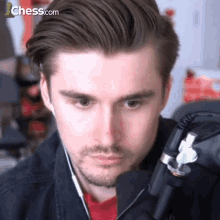
- The aurora of different planets

Marte Solarballs machitng Icons 1/2

დ .•*””*• Юпитер •*””*•.დ


- Dolphin in the Jovian Clouds.

baby jupiter🥹🧡



- Moon: Close up of Copernicus [OC]

Venus Sextile Jupiter Synastry



Getting observations on asteroid 2020 OL1 moving at 20.7arc seconds per minute. Almost 19mag with 30 second exposures!!!! The RASA14 and QHY600 have been an amazing combo. Www.twitch.tv/asteroid_hunters #astrophotography #opticalinstrument #astronomy #celestronrocks #nightimages #astro_photography #celestron #hyperstar #zwo #stars #nightphotography#twitch #livestream #astro #astroimaging #deepsky #astrophotos #cosmos #galaxy #galaxies #longexposure #nasa #universetoday #milkyway #universetoday #stargazing #moon #nasa #yourESA #rasa #opttelescopes - @asteroid_hunters on Instagram


Jupiter


- Artsy

Even poor Theia...

Even poor Theia...


- Earthrise, William Anders, Color NASA camera, 24 Dec 1968

Baby Júpiter Solarballs

Art by: Makoto Kino


- Saturn, Me

𝐶ℎ𝑒𝑟𝑟𝑦

Jupi bebé 🥺


- Morning Fog in Noctis Labyrinthus, Mars

jupiterr 🕶️

☆


- Close-up of Jupiter looks like work of art (NASA Juno mission)

♡


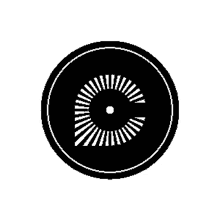
- Beautiful Other Worlds

Hotaru Tomoe (Tv Tubo Version)


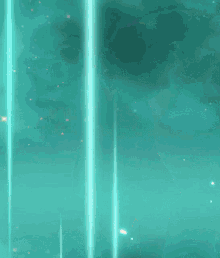
- Jupiter is an art masterpiece

jupiter icon from milky way and the galaxy girls

♡


- Terrain of Pluto.

(七!)



- Despite the light and air pollution in the western industrial area, managed to get a pic of Saturn 5 months back with my old Samsung note 8 through the omni xlt 127 with 25mm eyepiece. Stacked with autostakkert.

Jupi bebé 🥺


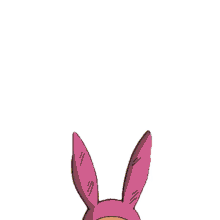
- Asteroids and Meteoroids


- Europa & Jupiter

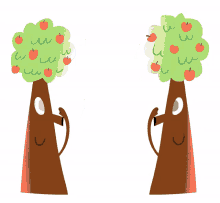
- A close-up image I took of the lunar seas Tranquillity and Serenity.


- From a telescope, Uranus and Neptune look like twins


- Mars continues to appear larger and larger in the night sky. Here is a sequence of images Ive taken over the last four months showing its progress [OC]

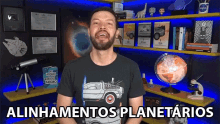
- Just two images. One of many UFOs made by the army in Colares Brazil 1977 when people were attacked. The second is one of the last pictures taken in 1959 by the Dyatlov group. It was the last thing they ever did.


- thousand micron glass fiber shattered during grinding process


- The size of the planets and stars in our solar system with perspective

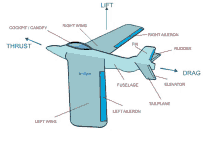
- On Jupiter and Saturn it rains diamonds... New atmospheric data for the gas giants indicates that carbon is abundant in its dazzling crystal form, they say. Lightning storms turn methane into soot (carbon) which as it falls hardens into chunks of graphite and then diamond.


- Not even out of curiosity


- Voyager 1 mosaic of Jupiters northern hemisphere

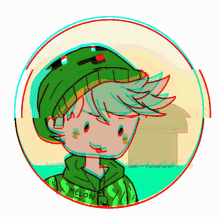
- Metallic UFO hovering above Comet 67P/Churyumov-Gerasimenk


- How our Astrophotography has developed

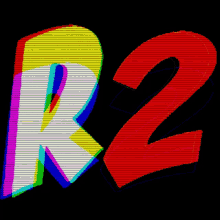
- Oh god oh shit

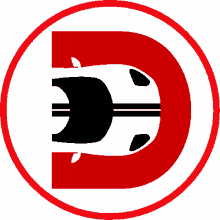
- My new favorite space photo

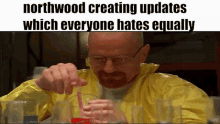
- Apollo 8: Christmas At The Moon

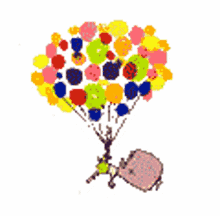
- First shot of Saturn with my new Celestron Nexstar 8se


- False Color Image of the Moon showing compositional variations


Queridos amigos, les presentamos a Gea, quien nos estará ayudando con las publicaciones y quiere conocerles. Además, estrenamos nuestra nueva imagen institucional, que busca presentar un estilo más fresco y moderno para nuestra sociedad. - @geologia_ambiental on Instagram

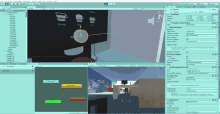
- Planeta Ceres (planeta anão)


- NASA just posted a close up shot of a comet - taken by Rosetta

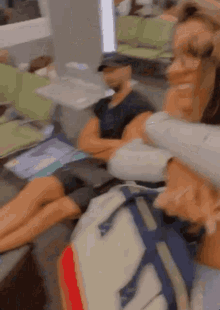
- Ram tattoo

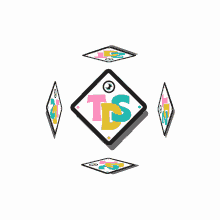
- Dust storms and clouds on Mars


Date image was taken: 8/26/2020⠀ ⠀ Image Title: Syrtis Major and Hellas Planitia on Planet Mars⠀ ⠀ Image Description and Details : Image of planet Mars taken on August 26, 2020 through a Maksutov Rumak 255mm F20 telescope + 2x Barlow lens (F40, 10.000mm focal lenght). Exposure 0220, 1500/4200 frames stacked at 30 fps on USB 2.0. Processed with Autostakkert, Registax, Fitswork, Photoshop.⠀ ⠀ Your Website or Facebook Profile: http://www.astronomicalangrenus.it⠀ ⠀ Copyright Information: Francesco Badalotti⠀ AAPOD2 Title: MARS⠀ AAPOD2 Page Link: https://www.aapod2.com/blog/mars-2020 - @aapod.2 on Instagram

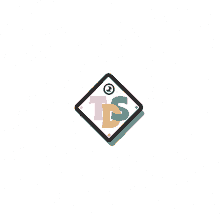
- Healing Clay

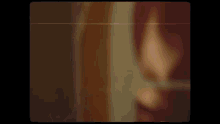
- I just took this photo of saturn


- Great Red Spot, Red Spot Jr., and another little Red Spot on Jupiter [1316x1252]


- This is Jupiter


- Andromeda galaxy


- Jupiter and its moon Europa


- Jupiter as seen in 1879 and 2014. Weve come a long way [1299x648]


Beauty in motion: Here’s another striking view from my latest close pass by Jupiter. The giant planet has no solid surface in the same way Earth does. Data collected during this mission indicate that some of the giant planet’s winds run deeper and last longer than similar atmospheric processes on Earth. See more details at the link in my bio. Image processing by Kevin M. Gill. #NASA #space #science #nature #Jupiter #Juno #JunoCam #planets - @nasajuno on Instagram


- Saturn through my 8 SCT

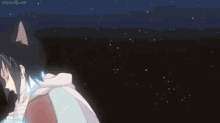
- Saturns north pole.


- MICRO


- Heat Shock Protein 27 (HSP27)

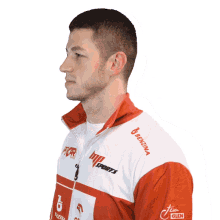
- NASA’s Most Recent Photo Of The Day

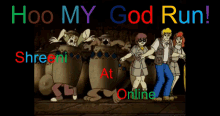
- Giordano Bruno crater [3711 × 2163]

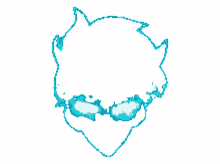
- My first attempt at Saturn! Skywatcher 200P and a Canon EOS M3


- This False Colour Picture of PLuto


- Earth to scale if it replaced Io on its orbit around Jupiter - (NASA, JPL-Caltech - processing Alexis Tranchandon)

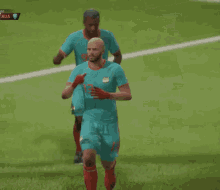
- Constellation

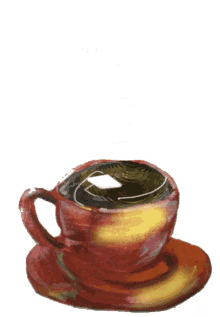
- Current State of my Map of Phobos in 2140


- Yesterday (02/16), the ESA released a very detailed image of comet 67p on its flyby at an altitude of 8.7 km. You would be able to see an astronaut at this level.


- ART GLASS VASES


- In 1994, fragments of the comet Shoemakers - Levy 9 crashed into Jupiter (in the picture). It is the first space telescope image of the collision of two bodies in space. Besides the fact that it looks amazing, the pictures provided a new understanding of the composition of the atmosphere of Jupiter.


- My attempt at a gas giant


- How big do planets appear as seen from each other


- Two massive storms saying hi.


- Jupiter is MASSIVE.


- Europa...a moon with an undersurface ocean

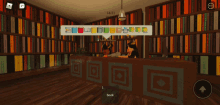
- Cool Facts and Science

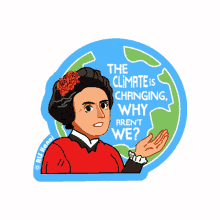
Saturn, on April 25, 2014. #moon #space #astrophotography #astronomy #beautiful #planets #star #mercury #venus #earth #mars #jupiter #saturn #uranus #neptune #pluto - @spacefromthebackyard on Instagram

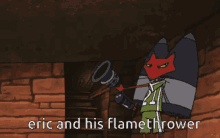
- This is Miranda, the smallest of Uranus 5 main moons. It has the highest cliff in the Solar System, Verona Rupes, at 10 km (6 miles) high and is nicknamed the Frankestein moon because scientists think it was destroyed from an impact and reassorted randomly, creating its unique landscape.


- Great Red Spot closeup (contrast-enhanced)

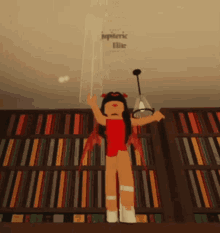
- Saturn from Neighborhood Star Party


- Jupiters South Pole (PJ-4)


- Screams echo around you....

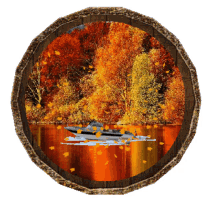
- Dot Against the Dark, New Cassini Image of Saturn with Mimas [1020 x 1020]

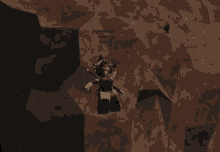
- Backyard photograph of Saturn


- Parakaryon myojinensis, a creature found only once near a hydrothermal vent south of japan, and is so unique that scientist cant agree if its a prokaryote (bacteria, etc), an eukaryote (animals, plants, fungi, etc) or a new domain entirely.

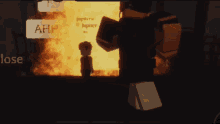
- Sunspot 2719 on 2018-08-23 [OC]


- Processed image of Pluto based on principal component analysis technique


- Saturns moon Enceladus [2848x1602]


- Saturns Jet Streams in False Color [924x877]


- A magnetic field shaping iron powder.


- I made this infrared image of Saturn, processing over 25,000 frames captured at 200fps with my ZWO ASI224MC camera and my 8 inch Schmidt-Cassegrain scope.

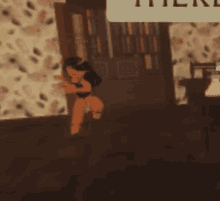
Congratulations to Kelley Sedlock, OD, 2020 Ocular Photography Contest: Honorable Mention 1 Winner. #AAOptometry #linkinbio - @aaopt on Instagram


– Repost from @royalastronomicalsocietycanada – Check the linkinbio to register for the Astrophotography live stream! CONTEST ANNOUNCEMENT! Take a photo of something up in space* and post on Instagram or Twitter for the chance to win a copy of the current issue of SkyNews, and Nightwatch, an amazing introductory astronomy book! Tag @astrogeoguy, @royalastronomicalsocietycanada and use the hashtag #astronomytime to enter. Winner will be selected at random, so dont worry about your astrophotography skills! Contest closes Tuesday at 10am EDT, winner will be announced at 3:30pm EDT during the Astrophotography livestream. *object must be at low Earth orbit or higher (e.g. the ISS, satellites, stars, the Moon, Venus) ––––– Sharing your astro shots of the Toronto night sky! Original image by 📸: @nasa Tag + Follow ⇢ @urbanastrotoronto Hashtag ⇢ #UrbanAstroTO - @urbanastrotoronto on Instagram

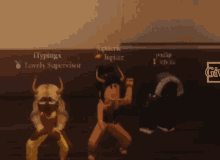
A new portrait of Jupiters storms 🌀 406 million miles from Earth, Jupiter is captured by our @NASAHubble Space Telescope, with the Great Red Spot visible as it plows through clouds. Researchers say the Great Red Spot measures about 9,800 miles across, big enough to swallow the Earth. A unique and exciting detail of Hubble’s snapshot appears at mid-northern latitudes: a bright, white, stretched-out storm traveling around the planet at 350 mph (560 km/h). While it’s normal for storms to pop up in this region every six years or so, the timing of Hubbles observations on Aug. 25, 2020, allowed for a perfect showing of the structure. Visible on the far left is Jupiter’s icy moon Europa. Credit: NASA, @EuropeanSpaceAgency, STScI, A. Simon (Goddard Space Flight Center), M.H. Wong (University of California, Berkeley), and the OPAL team #NASA #Hubble #Jupiter #Storms #Europa #Planets - @nasa on Instagram


- Astronomy

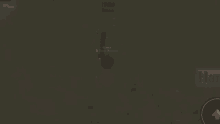
- New Image of Saturn, taken by Cassini


- Apologia Physical Science

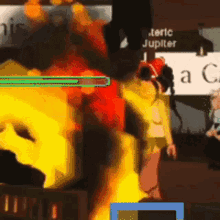
- Saturn’s sponge-like moon Hyperion


- Scienze


- Jupiter & moons


- I created a map of Jupiter from my backyard


- This is Jupiter


- 3D .: artifice


- Pluto, the Dwarf Planet


- Latest picture of Pluto

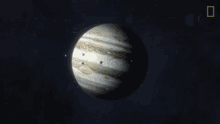
- Plutos Chaos Region


- Astronomy


- Moon: Tycho, Clavius and many more [OC]

- March of the moons: Hubble Space Telescope captured a rare look at three of Jupiters largest moons parading across Jupiter in 2015. Credit: NASA, ESA, and the Hubble Heritage Team

- Rosettas last image

- Saturns moon Titan

Thermal Image of #VikramLander #Chandrayaan2 #VikramLanderFound #ISRO #chandrayaan2landing🌘🚀🇮🇳 - @ganeshrane_26 on Instagram

- That’s no Death Star....that’s a moon. In honour of Star Wars celebration here is our solar systems answer to the Death Star. Mimas is one of Saturn’s many moons, and it could definitely be mistaken for the real Death Star. It’s heat signature also resembles Pac-Man.

- place and time

- This is Jupiter

- Saturn (Planet)

- Perhaps this COVID lockdown is a dooms day scenario so people can spend their final moments with loved ones.

- To celebrate its 5,000th day on Mars, NASA last week commanded the Opportunity rover to take a self portrait with its microscope camera- something it was never designed to do.

- The Dolphin spotted on Jupiter by NASAs Juno spacecraft during a flyby conducted on 29th October 2018

- Taken by the Cassini Spacecraft on its journey towards Saturn

- Jupiter & moons

- Raw footage of Jupiter from Voyager 1, July 5, 1979

- This is Jupiter

Smelly gas = life on Venus? 👽🪐 In a surprising twist, scientists at @mitpics @cardiffuni , and elsewhere have observed what may be signs of life in the clouds of our other, even closer planetary neighbor, Venus. While they have not found direct evidence of living organisms there, if their observation is indeed associated with life, it must be some sort of “aerial” life-form in Venus’ clouds — the only habitable portion of what is otherwise a scorched and inhospitable world. “This means either this is life, or it’s some sort of physical or chemical process that we do not expect to happen on rocky planets,” adds co-author and @mit_eaps Research Scientist Janusz Petkowski. Read more and watch the video: https://news.mit.edu/2020/life-venus-phosphine-0914 #venus #venusnews #life #habitable #habitableplanets #lifeonvenus #lifeinspace #space #et #extraterrestrial #planet #planets #spacescience #earthscience #planetaryscience #planetary #phosphorus #gas #discovery #science #mit #cardiff #massachusettsinstituteoftechnology - @mitscience on Instagram

Jupiters volcanically active moon Io casts its shadow on the planet in this dramatic image from NASAs Juno spacecraft. As with solar eclipses on the Earth, within the dark circle racing across Jupiters cloud tops one would witness a full solar eclipse as Io passes in front of the Sun. Such events occur frequently on Jupiter because it is a large planet with many moons. In addition, unlike most other planets in our solar system, Jupiters axis is not highly tilted relative to its orbit, so the Sun never strays far from Jupiters equatorial plane (+/- 3 degrees). This means Jupiters moons regularly cast their shadows on the planet throughout its year. Image Credit: NASA/JPL-Caltech/SwRI/MSSS/Kevin M. Gill (CC-BY) #NASA #MarshallSpaceFlightCenter #MSFC #Marshall #jpl #jetpropulsionlaboratory #nasamarshall #MSFC #solarsystem #juno #jupiter #space #astronomy #nasajuno #nasamarshallspaceflightcenter - @nasa_marshall on Instagram

- My first image of the sun using my brand new Coronado PST and DMK 21 camera

- NASAs Juno caputures Jupiters southern hemisphere as the spacecraft sped away after a Nov. 3, 2019 close flyby. Theres massive cyclones near Jupiters south pole, as well as the chaotic clouds of the folded filamentary region — the area between the orange band and the brownish polar region.

- Vitamin packs

- Saturns moon Helene, a trojan moon of Dione (co-orbital in L-4 point), as seen by Cassini in approximate natural color. Data taken in June 2011.

- Subaru telescope

- Art note !

- Jupiter captured in 1879 vs Present Day

- The surface of Saturns moon Titan

- [1722x4000] Stormy Day at Jupiter

- Astronomy/Astrophysics

- Astre

- Aliens on the moon

- The First Preliminary Map of Asteroid Ryugu!

- This striking view of Jupiter’s Great Red Spot and turbulent southern hemisphere was captured by NASA’s Juno spacecraft as it performed a close pass of the gas giant planet. Juno took the three images used to produce this color-enhanced view on Feb. 12, 2019 [1600 x 1310]

- Close look at Jupiters clouds

Heres a fine and very detailed picture of other side of jupiter, thanks to @NASA for such beautiful captures, Enjoy! - @planetjupiterphotos on Instagram

- Asteroids and comets

- Jupiter and Ganymede

- Archivos Secretos

- Looks like there is a trail on Phobos [2600 × 2151]

- Jupiter & moons

- New image showing full atlas of Ceres

- Saturn captured with my phone an hour ago. Im very proud of the result!

- aurora ryder.

- Jupiter’s South Pole - composite image from Juno spacecraft

- NASA’s Juno spacecraft just captured this view of Jupiter’s red spot

- Landslide on comet 67P/Churyumov-Gerasimenko? How can this be in a microgravity environment?

- The smallest Moon in our solar system, Deimos, has a radius of 3.8 Miles

- Sistema solar

- Limitless

- galaxy

- A photo of Jupiter taken by NASA’s Juno

- Io over Jupiter [999×959]

- Uranus and its moons in enhanced color. Seen Hubble.

- Rocket ride

- Saturn in 8 inch dobsonian telescope

- Astrometrics

- Space Images

- Junos third close flyby of Jupiter [1041x827]

- Three-dimensional Jovian cloudscape, courtesy of NASAs Juno spacecraft

Solar imaging in Ha with small scale aperture telescopes by Alexandre J. LHOEST https://www.amateurastrophotography.com/solar-imaging-in-ha-with-small-scale-aperturer #amateurphotography #amateurastrophotographyezine #photography #astrophotography #sunset #sun #telescope - @amateurastrophotographyezine on Instagram

- Earth in comparison with Saturn’s Ring System

- Saturns North Pole Hexagon

- What Saturn looks like through a 6 inch telescope(May, 2020)

- galaxy

- Neptune as seen from Voyager 2 in August of 1989 [1535 × 1508]

In a surprising twist, scientists at MIT, @cardiffuni, and elsewhere have observed what may be signs of life in the clouds of closer planetary neighbor, Venus. #VenusNews Read about the research, see link in profile. #astronomy #astrophysics #PlanetaryScience #research #astronomy #space #exoplanets #life @mit_eaps @mitscience - @mitpics on Instagram

- These weird looking moons of Saturn are interesting, in that they accumulate so much material from Saturn’s rings that they looked flattened out. More info - https://apod.nasa.gov/apod/ap190518.html

- unknown Title, dennis wojtkiewicz, oil, 2016

- A photo from NASAs Juno is more like a painting

- ITAP inside of a cannabis trichome (the sticky, hairlike protrusions on the leaf containing its many active chemicals) (photomicroscopy)

- Picture of Jupiter taken in 1879 vs 2020

- Astronomy

- Astronomy/Astrophysics

- I took this photo a couple weeks ago that shows different layers of the sun

- The 1800km-wide Argyre Basin imaged by Viking Orbiter 2 in 1977. [5745x4940px]

- Hubble image of Uranus [870x580]

- Saturn, from above

- New image the Eta Carinae star system

Pluton est un planète naine de notre système solaire, découverte en 1930 par William Tombaugh. Visible actuellement dans le ciel. ✨ #astronomy #astronomie #planet #telescope #space #spacelovers - @sky_dreamer.astronomy on Instagram

- *cosmic view*

Jupiter’s roses: A cosmic bouquet just for you. Not actual roses, these are in fact cyclones on Jupiter’s north pole. These swirls of striking colors in this extreme false color are a rendering of an image from our Juno mission. The huge, persistent cyclone found at Jupiter’s north pole is visible at the center of the image, encircled by smaller cyclones that range in size from 2,500 to 2,900 miles (4,000 to 4,600 kilometers). Together, this pattern of storms covers an area that would dwarf the Earth. Citizen scientist Gerald Eichstädt made this composite image using data obtained by the JunoCam instrument during four of the Juno spacecraft’s close passes by Jupiter, which took place between Feb. 17, 2020, and July 25, 2020. The greatly exaggerated color is partially a result of combining many individual images to create this view. Image data: NASA/JPL-Caltech/SwRI/MSSS Image processing by Gerald Eichstädt #NASA #Citizenscientist #Jupiter #JunoCam #Roses #Space #Cyclones - @nasa on Instagram

- Beautiful Jupiter

- Saturns North Pole has a hexagon looking polar cap.

Racing stripes: Jupiter is huge, but makes a full rotation in just 10 hours. This creates powerful jet streams that divide its clouds into distinctive bands, as seen in this striking JunoCam image processed by citizen scientist David Marriott. See details at the link in our bio. #NASA #space #nature #Jupiter #Juno #JunoCam #planets - @nasajuno on Instagram

- Space imaging progress..

- Io casts its shadow on Jupiter

- Thats Phobos, Mars moon. Imagine having a satellite that actually lives upto its name.

- sometimes I cast glass and make wizard staffs

- 243 Ida and its moon Dactyl. Dactyl is the first satellite of an asteroid to be discovered.

- Jupiters Twilight Zone [1440x1319]

- A real image of COVID-19

- Today is Asteroid Day. These are the asteroids that were visited by a spacecraft, to scale

Saturn’s North Pole is also known as the Hexagon on Saturn is an almost alien like thing in space. The sides of the Hexagon are about 14.500 km long, that is 2.000 km longer than the diameter of Earth. The reason this Hexagon exists is probably hidden deep beneath the surface. Scientists think it has something to do with the turbulent storms that are happening underneath the Hexagon, making a rotating Hexagon experiencing high pressure. 🌪🌀 Do you think it has something to do with alien life? 👽 | | | De noord pool van Saturnus, ook wel bekend als de ‘Hexagon’ (zeshoek), is een alien achtig object in de ruimte. De zijkanten van de Hexagon zijn ongeveer 14.500 km lang, dat is 2.000 km langer dan de diameter van de Aarde. De reden dat de Hexagon bestaat is waarschijnlijk verborgen diep onder de oppervlakte van Saturnus. Wetenschappers denken dat het iets heeft te maken met de turbulente stormen die onder de Hexagon plaatsvinden, waardoor een onder hoge druk roterende Hexagon ontstaat. 🌪🌀 Denk jij dat dit iets te maken heeft met buitenaards leven?👽 - @spaceexplained on Instagram

- The storm om saturn (the Rose of saturn)

- Pac man

- Apollo moon missions

- I made this jupiter image using data from the Juno spacecraft.

- Picture of Jupiter taken by Juno space probe. Looks so fucking cool.

- Science

- Aurorae on Jupiter.

- Stereograph of Ultima Thule from NASA livestream

- Sun in h-alpha from two hours ago

- The first photo of Earth from the moon was taken on August 23, 1966. (NASA)

- This was one of my first attempts at photographing saturn. Unfortunately its quite fuzzy but Im still proud of it!

- Sand that has been posted to this sub 300 times.

- Saturn: Translucent Rings [1020 x 1020]

- Jupiters Bands of Clouds [1722 x 1722]

- Jupiter and Europa seen by the Voyager-1 spacecraft. © NASA / JPL-Caltech / Kevin M. Gill [Xpost from r/cosmicporn]

The intriguing streaks in this recent view of Jupiter are hazes floating above the planet’s cloud tops. Scientists don’t know exactly how they form, at least not yet. Learn more at the link in our bio. 📸 Image processed by Gerald Eichstädt #NASA #space #science #nature #Jupiter #Juno #JunoCam - @nasajuno on Instagram

- Plutos Dark Areas

- Cassini Captures Spectacular View Of Sunlight Glinting Off Of Titans Seas

@wiels_brussels hosts the exhibition Risquons tout, with the participation of precursor of performance art #EstherFerrer. Until 10th January 2021. - @spainculturebe on Instagram

- I finally managed to get a clear view of the Cassini Division. This is a gap thats only a few hundred miles wider than the continental usa!

- NASA just released images from Cassinis new closer orbit around Saturn [1024x1024]

- Processed image of Jupiters south pole taken by Juno

- great Pyrenees

- Apollo 12 landing site as seen by a Japanese probe.

- The face on Mars

- The Juno Great Red Spot images are amazing, but this 3D image showing the depth of the storms is just breath taking

- Battle-scarred Jupiter after Shoemaker–Levy 9‘s many comet bodies slammed into the planet. The impacts released an energy equivalent to 6,000,000 megatons of TNT (600 times the worlds nuclear arsenal)

- A recent image of Jupiter

- Jupiter, alone in the darkness

- Jupiter, courtesy of NASA Juno spacecraft

- Jupiters moon Io casts its shadow on Jupiter

- Jupiter via an 8 SCT

- Sunspot 2645 on 2 April, 2017

- Stunning new photo of Jupiter by Nasas Juno spacecraft

- Celestial

- Hubble space telescope

- Phobos silhouetted against the surface of mars

- New image of Saturn, taken by Cassini

- one of the clearest pictures of neptune

- The underside of Jupiter- true color image

- Shadow and Glory of Hyabusa2 Space Probe On Asteroid Ryugu [512x512]

- Galaxy Geode

- Eruption on Io, seen by New Horizons on its Jupiter flyby of 2007

- Cassini spacecraft has tracked the aftermath of a rare massive storm on Saturn.

- The first colored photo of Earth taken from space (1967).

- Project Blue Book

- NASAs New Satellite Mission For 2022 To Asteroid Belt: They Believe That Psyche Asteroid Could Be A Failed Planet. May Also Be How Earth First Started!

- Moons of the Solar System

- Two days ago the ISS passed in front of the Sun near my place, video link in the comments.

- A magnificent close up of Jupiter, taken by Juno.

- Infrared Saturn Clouds

- Hello, I am a 16 year old astronomer and astrophotographers. Thought you guys may like the picture of Saturn I took over the summer.

- Ganymede - moon of Jupiter

- Jupiter’s Ocean moon Europa

- Reconstructed and edited a picture of Jupiter taken from the JUNO mission of NASA

- My first photo of Copernicus. [OC]

- Astrophotography

- Jupiters moon europa

- Eta Carinaes great eruption [738 × 726]

- Geysers erupting on Neptunes moon Triton

- A Robots Shadow on Asteroid Itokawa

- Recently, reasearchers find cell-free mitochondria for the first time in the history of science. They live in healthy human’s body, but their function is yet unclear.

- Size change of Jupiter as viewed from Earth less than a month apart, as we get further away from it.

- I maxed the s#!t out of the phones zoom.

- Io Transit - #397 ASTRO PHOTO OF THE DAY featuring @boundless_valley #astrophotographyindia - -- - CATEGORY: TRACKED-S - I always prefer waking up early when these giants are high above, rather than staying up late night. Kinda feel fresh capturing them in the pre-dawn hours. Here, you can see the transit of Jupiter’s moon ‘io’ and its shadow being cast on the planet. Such an incredible view !! This here, is a stack of 3000 frames with 1.5x barlow. Cam: Neximage 5 attached to Nexstar 127SLT Maksutov. Have a lovely eve, people. 😊🔭🌌 - *READ ME* admin: These are exclusive hashtags used by us to tag our featured photos inorder to index contents within the photos. How do you make use of these hashtags? Just input any hashtag in your IG search bar to find the collection of photos that are associated with that specific hashtag *PLEASE DONT USE THESE HASHTAGS IN YOUR CAPTIONS* 👇 #featured_api #tracked_api #solarsystem_api #planetary_api #jupiter_api - @astrophotography.india on Instagram

- Jupiters moon europa

- moons of Jupiter essay

- Ganymede - moon of Jupiter

- Rocket ride

- [red-cyan glasses!] Anaglyph of Mercurys surface. 35 m/px detail of a graben (≈40 km left to right) at Pantheon fossae of Caloris planitia. Grayscale images acquired by MESSENGER probes MDIS camera at 2014-04-19. Credit: NASA/Johns Hopkins University Applied Physics Laboratory/Carnegie Institution

- Hexagonal maelstrom on the north pole of Saturn [pic] [x-post from /r/images]

- Holy fuck

- Miranda, moon of Uranus, during the January 24 1986 flyby of Voyager 2 [OC] [1834x1824]

- A new JunoCam image highlights a massive rotating storm in Jupiter’s southern hemisphere

- Saturns hexagonal north pole

- Jupiters Swirling South Pole.

- Composite view of Jupiters Southern Hemisphere using imagery from Junos Perijove 20 on May 29th.

- MRO IMAGE OF SCHIAPARELLI

- The Geysers of Triton.

- astrological wonders

- NASA gravity field map of our moon

- STUNNING VORTICES OF JUPITERS SOUTH POLE

- I made a 3D image of Saturn by taking pics about a year apart. Relax your eyes until the images merge to make the image 3D. [OC]

- New image of Saturns hexagonal polar storms

- Solar System Exploration

- Saturn, March 19 2013

- Juno spacecraft

“Originality is the thing.”- Lester Young “Hello, I’m Prabal Saxena, an early-career researcher who studies exoplanets, ocean worlds and habitability. A lot of astronomers are obsessed with water. I certainly am, and so are a bunch of scientists I work with. When we think about other planets, we ask so many questions about water that it almost seems a little unhealthy. The biggest one we ask is, “does the water on this planet exist in a way which may support life?” “One thing I’ve been thinking about more recently is how different “ocean worlds” can be. The inestimable jazz player Lester Young wasn’t talking about planets then, but really nailed it when he said ‘originality is the thing.’ Just check out this first image of Pluto, a dwarf planet.” “This second image is just a sample of ocean worlds that I put together. It shows how different these places can be. These objects are all real images (taken either by NASA missions/observatories or the Gemini Planet Imager) of planets taken with no enhancement of colors. “Without knowing anything about these planets, you can already tell they are each incredibly unique.” “Some of these worlds are basically atmosphere-less ice balls with oceans buried underneath (like Europa or Enceladus), while others are shrouded in thick or multi-layered haze dominated atmospheres (like Titan and Pluto). The surface and oceans are all different too! “ “Some are believed to be really briny or may have other compounds that act as ‘anti-freezes’ (like on Ceres or Pluto). Others have evidence of recent activity on the surface that suggest that an underlying ocean is modifying the surface (Triton). “Some even have living things consuming, swimming in and surfing on the water like our own planet. “ “Finally, there are those planets where we are only just beginning to glimpse their features with current observations, like Eris and exoplanets. As we get more detailed observations of these and other worlds in the future, I’m sure we’ll continue to be surprised and amazed at these original worlds.” Image credits: NASA/Apollo 17, NASA/JPL/University of Arizona, NASA/JPL-Caltech/Space Science Institute, NASA/JPL-Caltech/Space Science - @nasagoddard on Instagram

- Titans south polar vortex as seen by Cassini in June 2012

- PsBattle: The underside of Jupiter

- Forbidden Fried Egg

- Saturns north pole, taken by Cassini

- Saturns north pole hexagon. [991x812]

- Amazing views of Saturns North Pole.

- Ganymede - moon of Jupiter

- Large white oval in Jupiters North Temperate Zone, Juno Perijove 12 [3884x1574]

- Tombough Regio in all its glory

- moons of Jupiter essay

- Our Star, the Sun

- This is curiosity! Im suprised that we could track it

- Cassini Snapshot of Saturns North Polar Hexagon and Vortex [427x247]

- Cosmos

- The upcoming E-ELT, which will be the worlds largest telescope when it is completed in 2024, will be able to image Jupiters moons at the same resolution at NASAs Galileo orbiter

- Forbidden coffee

- Curiosity Rover landing captured by the Mars Reconnaissance Orbiter

- 3DCG data

- Stickney Crater, a massive depression in Phobos, moon of Mars [1280x950]

- This is the first ever photo of the Earth

- Bizzare Elephant skin Terrain Revealed by Cassinis First Flyby of Enceladuss North Pole

